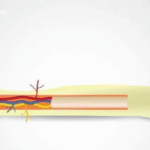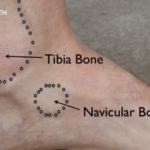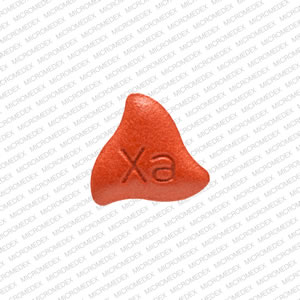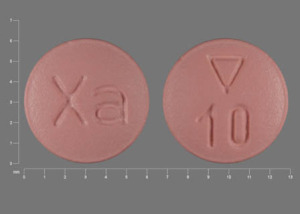
What is Rivaroxaban?
Rivaroxaban can be used to treat or even prevent blood clots.Blood clots may occur in either your legs or lungs. Rivaroxaban can be used to reduce the risk of blood clots returning after treatment has been given for at least six months for adults and for at least five days for children under 18 years old. Rivaroxaban can be given with aspirin in order to reduce the risk of a stroke, heart attack, or other serious problems with the heart or blood circulation. This includes adults with peripheral artery diseases (reduced flow of blood to the legs) or coronary artery diseases (clogged arteries). Rivaroxaban is also used to prevent blood clots among adults who are unable to move normally during or after an inpatient stay or following a hip or knee replacement. Rivaroxaban is used to prevent blood clots in children aged 2 and older who have had surgery to treat a heart condition that was present at birth.
Rivaroxaban can also be used to reduce the risk of blood clots and stroke in adults who have atrial flutter. This medication guide does not list all possible uses of Rivaroxaban.
Side effects of Rivaroxaban
Symptoms of allergic reaction that should prompt medical intervention immediately include difficulty breathing, hives and swelling to lips, face, tongue or throat. Seek emergency medical care if you experience any of the following symptoms: lower back pain; numbness or tingling in your legs or arms; or a loss of control over your bladder or bowels.
Rivaroxaban may cause you to bleed easier.Signs of bleeding could include:
- Bruising or bleeding that will not stop (nosebleeds; bleeding gums; heavy menstrual blood);
- Pain, swelling, new drainage, or excessive bleeding
- Headaches, dizziness, weakness and an overwhelming sensation that one is about to pass out are symptoms that should never be ignored;
- Urine that appears red, pink, or brown
- Bloody or tarry stool, vomiting blood, or vomit that looks like coffee grounds
Some of the common side effects associated with rivaroxaban include:
- Bleeding;
- Vomiting;
- Inflammation of the stomach or gut
There may be other side effects.Call your physician if experiencing side effects; otherwise contact the FDA at 1-800-FDA-1088 to report them..
Warnings
Stopping rivaroxaban suddenly can increase your risk of blood clots or stroke. Consult with your doctor before stopping. You can have a stroke or blood clot if you stop suddenly. When rivaroxaban is combined with certain drugs, the risk of bleeding can be increased.Inform your physician of all medications you are currently taking. If you or your child experience any signs of bleeding (such as headaches or feeling weak, nosebleeds or heavy periods, bloody or tarry stool, bloody urine, vomiting blood or vomit that looks similar to coffee grounds, or bleeding that won't stop), call your doctor immediately. If you have spinal anesthesia or a spinal tape, you should tell any doctor that you take rivaroxaban.
Before you take this drug
If you have uncontrolled or active bleeding, you should not take rivaroxaban. Rivaroxaban may make bleeding easier, even if the injury is minor. Contact your doctor immediately if the bleeding does not stop. Rivaroxaban may cause a blood clot when you receive spinal or epidural anesthesia. This type of blood clot can cause long-term or permanent paralysis.
Tell your doctor if:
- A history of spinal problems or a previous surgery.
- A history of repeated or difficult spinal taps
- A thin tube (catheter), placed behind your back, to administer certain medicines;
- Bleeding problems
- An artificial heart valve
- Antiphospholipid Syndrome is an immune system disorder that increases the risk of blood clots.
- Nsaids, such as aspirin, ibuprofen, naproxen, and other anti-clotting medicines, are commonly used.
- Liver or kidney disease
If you plan to get pregnant or are already pregnant, tell your doctor. You may not be able to breastfeed your baby if you are taking rivaroxaban. You should ask your doctor for more information.
How to take Rivaroxaban?
Read all the instructions or guides that come with your medication and follow the directions. Sometimes, your doctor will change the dose. You must take the medication exactly as prescribed. You should not stop or change the dose of this medication without consulting your doctor. You can be at greater risk of stroke or blood clots if you stop suddenly. Tell your doctor that you use rivaroxaban. Tell your doctor or dentist that you're taking this medication before you undergo surgery or dentistry. You may have to temporarily stop taking rivaroxaban if you require anesthesia during a medical procedure. If you have a certain condition, you may need to take rivaroxaban with food. The strength of the tablet you are taking can also affect whether you should take it with or without food. Following your doctor's dosing instructions should be a top priority. If you can't swallow the rivaroxaban tablets whole, crush them and mix them with some applesauce. The mixture should be swallowed immediately without chewing. You should eat immediately after taking a 15- or 20-mg tablet. If you need to, follow your healthcare provider's directions for giving rivaroxaban via a feeding tub. Weight is used to determine the dose for children and adolescents. If your child loses or gains weight, the dose may change. Make sure your child swallows the entire tablet. Rivaroxaban cannot be divided to give a smaller dosage. Speak to your doctor about switching from the liquid oral suspension to the tablet form. Give a full dose if your child vomits in the first 30 minutes after taking the liquid oral suspension. If your child vomits after 30 minutes of taking the oral liquid suspension, do not give a second dose. Continue to administer the next dose according to the schedule. Shake the suspension. Use the measuring device provided (not a spoon) to measure a dose. Store away from moisture or heat at room temperature. Oral suspension (liquid) should not be frozen.
What happens if I miss the dose?
You should only take the medication once a day. Take it as soon as possible after you remember, and then return to your normal schedule.Do not exceed one dose daily. You can take the missed dose the day after you forget it. The missed morning dose can be taken with the evening dose. Continue to take your regular doses at your usual time. Take your next dose as usual if you are taking the 2.5-milligram tablets twice a day. Never take two doses in one go. You can give your child the morning dose you missed as soon as possible. The missed morning dose can be given with the evening dose. You can skip the evening dose if you forget to take it. If your child is taking rivaroxaban three times a day, skip the missed dose. Give the next dose as usual. Do not administer two doses at once. Refill your prescription before you run out.
What happens if I overdose?
Call 1-800-222-1222 for poison help or seek immediate medical attention. An overdose may cause excessive bleeding.
What should be avoided?
Avoid any activity that increases your risk of injury or bleeding. Take extra care when shaving or brushing your teeth.
Interaction with other drug
It is sometimes not safe to take certain medications at the same time. Using certain drugs together can cause side effects and/or reduce the effectiveness of other medications.
Inform your physician of all medications you are currently taking. Many drugs can interact with rivaroxaban.
- Ketoconazole;
- Ritonavir;
- Erythromycin, rifampin;
- Carbamazepine, phenytoin;
- John's Wort;
- Medicines used to prevent blood clots, such as enoxaparin (warfarin), alteplase (clopidogrel), dipyridamole (ticlopidine), and others
- Aspirin, Ibuprofen, Naproxen, and celecoxibdiclofenac, Indomethacin, Meloxicam, and other nsaids
This list is incomplete, and other drugs can also affect rivaroxaban. These include prescription and over-the-counter medicines, vitamins, and herbal products. This list does not encompass all possible drug interactions.




